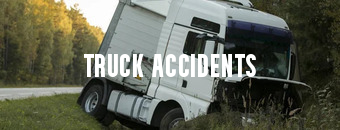The prevalence of human trafficking worldwide calls for everyone, especially human rights lawyers, to band together to protect the rights of victims. Based on the Global Report on Trafficking in Persons released by the United Nations Office on Drugs and Crime (UNODC), sexual exploitation makes up 79% of all human trafficking cases in the world. This makes it the most common form of human trafficking with the victims being mostly girls and women. The second most common, at 18%, is forced labor.
All across the globe, almost 20% of all human trafficking victims are children. However, in some areas of the Mekong region and Africa, children make up the majority of victims with the numbers reaching up to 100% in certain sectors in West Africa.
With the article below, we aim to provide information that will help you learn more about human trafficking in general, as well as the state of human trafficking in Canada, and what you can do to help.
What is Human Trafficking?
Human trafficking or trafficking in persons is considered the modern-day practice of slavery. It involves recruiting, transporting, harboring, and/or exercising control, influence, or direction over a person’s movements to exploit them. This is typically done through forced labor or sexual exploitation. Considered a heinous crime under the Criminal Code of Canada and the Immigration and Refugee Protection Act, human trafficking abuses those who are most vulnerable. The victims, mostly children and women, are stripped of their regular lives and coerced to provide sexual or labor services through different forced practices, most often than not for the perpetrators to directly earn profit.
Canada has been established as a source, transit country, and destination for human trafficking victims intended for forced labor and sexual exploitation. According to Statistics Canada, 1,708 human trafficking incidents were reported to Canadian law enforcement between 2009 and 2018. Ninety-seven percent of the victims in these incidents were girls and women. Forty-five percent of these reported victims were aged between 18 and 24 years old, while 28% were below 18, and 26% were 25 years old or older. Since 2009, 81% of the persons accused of trafficking in persons were men.
Aside from the police, people also turn to international rights lawyers before they report potential human trafficking incidents. This is especially if the victims in question are not Canadian citizens.
Types of Human Trafficking
Now that you have a basic understanding of what human trafficking is, it is time to learn more about the types of human trafficking.
- Sex Trafficking
A lot of human traffickers are known as pimps. “Prostitution” per se has long been considered a victimless crime or a legal offense where no party is injured and wherein all parties gave their consent. However, we know now that this is a complete misunderstanding of how prostitution works and that this has only led to the increase of sexual exploitation victims and made traffickers rich.
- Forced Labor
Victims of forced labor do not fight back because of their gratitude for having jobs even if they are non-English speaking refugees and because they want to provide for their families. It is common for these workers to feel like they could not pursue legal action despite the blatant labor violations.
- Organ Trafficking
According to the UNODC in 2011, the desperate situations of both donors and recipients have created a channel that’s exploited by networks dealing in international organ trafficking. These criminals take advantage of the desperation of a donor’s wish to improve their economic situation and that of the recipient who may only have no other option to improve their condition. A lot of the perpetrators who have dealt with this type of trafficking were discovered to have been legitimate professionals in the healthcare industry, which include doctors and nurses.
- Child Marriage
Based on a study conducted by Girls Not Brides, an NGO committed to ending child marriage, one in five girls is married before she turns 18. Although this practice is commonly known among girls, this fate also befalls boys. In 2019, UNICEF revealed that 115 million boys all around the world were wed before they reached 18. In Canada alone, more than 3,600 marriage certificates affecting children under 18 were issued between 2000 and 2018. This was in a McGill University study which also stated that the highest child marriage rates were noted in Alberta, Saskatchewan, Manitoba, and the territories. Although the legal marriage age in Canada and the UK is 18, those aged 16 and 17 years olds can still marry if they have parental consent.
- Child Soldier
A 2017 UNODC report cited how a 12-year-old girl was used to detonate a bomb in Damaturu, Yobe State, which killed 7 people at a bus station. In the same report, it was revealed how during the Boko Haram attacks, abducted boys were used to learn the identity of unmarried girls and women and those who refused to be part of the group. According to UNODC, children who survive this kind of ordeal must cope with terrible scars, both emotional and physical.
- Debt Bondage
Debt bondage is different from forced labor by the way the victim enters into an arrangement. Usually, the victim willingly signs a labor contract in an attempt to settle a “loan”. This traps the victim in a cycle of increasing loan amounts until there is no longer any possibility of paying everything completely.
People at Risk of Human Trafficking
Although anyone is at risk of becoming a victim of human trafficking, the points below can increase someone’s vulnerability.
People who are more at risk of being trafficked for sex are:
- Girls and women, although boys as well as men and people who are LGBTQI2S have also been known to be targeted
- Indigenous girls and women
- Young people who struggle with poverty, bullying, self-esteem, abuse, discrimination, isolation, and other family or social issues
- Young people who are marginalized and homeless
- People with mental illness, addiction, and developmental disabilities
There are certain cases though where these risk factors are not present. In such cases, traffickers frequently victimize very young people. They identify their needs, fulfill them, and then use their dependence as a means to control and/or exploit them.
When it comes to labor trafficking, people who are highly at risk are:
- Newcomers to Canada
- Migrant workers
- Homeless people
- People with undetermined immigration status
- People who do not speak the language
As you can see, these are the kinds of people who are usually in need of the services of a lawyer for human rights.
Signs Someone May Be Being Trafficked
Of course, you can also notice if someone is being trafficked if you know the signs. Below are the most common ones:
- Under 18 and already a sex worker or a prostitute
- Involved in activities controlled by somebody else and not allowed to speak for themselves
- Paid very little, unpaid, or treated poorly at work
- Depressed, fearful, tense, anxious, submissive, paranoid, or nervous (usually avoids eye contact and fear the police)
- Repaying a large debt through sex or labor
- Have branding symbols or tattoos, specifically names
- Shows signs that they’ve been abused like fractures, cigarette burns, or bruises
- Seems malnourished or suffering from a lack of medical care
- Don’t have their own money and belongings, and have no control over their documents like their passport
- Have been reported missing
- May not know of their surroundings or move frequently
What follows are signs that someone is being prepped for sex trafficking:
- Keeping secrets about activities they are involved in
- Withdrawing from friends and family
- Suddenly spending time with older people or person
- Having a new friend, girlfriend, or boyfriend who they won’t introduce to family and friends
- Becoming a habitual absentee or performing poorly in school
- Staying out later and more often
- Wearing clothes that are more sexualized
- Suddenly buying a second or new cell phone and not giving away the number
- Having new jewelry or clothing they could not afford to buy
If you know of someone who is a victim of sex trafficking and who does not want to seek help from the government or law enforcement, have them contact Diamond & Diamond for legal assistance today.
Trafficking Legislation in Canada
Considering that Canada has now been considered as a destination, transit country, and source for human trafficking victims, it is but right that they have comprehensive laws in place to fight against the problem. Under the Criminal Code of Canada, “trafficking in persons, as well as other exploitative conduct related to human trafficking”, is prohibited in the country. Moreover, the Immigration and Refugee Protection Act is also against any type of cross-border trafficking. Section 118 of the Act stipulates the prohibition of “knowingly organizing the coming into Canada of one or more persons through abduction, fraud, deception, or use or threat of force or coercion”. The punishment for this offense is a maximum penalty of life imprisonment and/or the payment of a fine amounting to up to $1 million.
Seek Assistance from a Human Rights Lawyer in Ontario
While the government may have different channels to help human trafficking victims, contacting a human rights lawyer may also help. If you know of someone who is a victim of trafficking or you are one yourself, call Diamond & Diamond for a free consultation today. The law firm always has a team ready to assist you with your problem.
“If you know of someone or if you are a victim of human trafficking, you can contact the Canadian Human Trafficking Hotline at 1 833 900-1010. This is a confidential and multilingual service that connects victims to emergency shelters and law enforcement.”
Pro Tip














